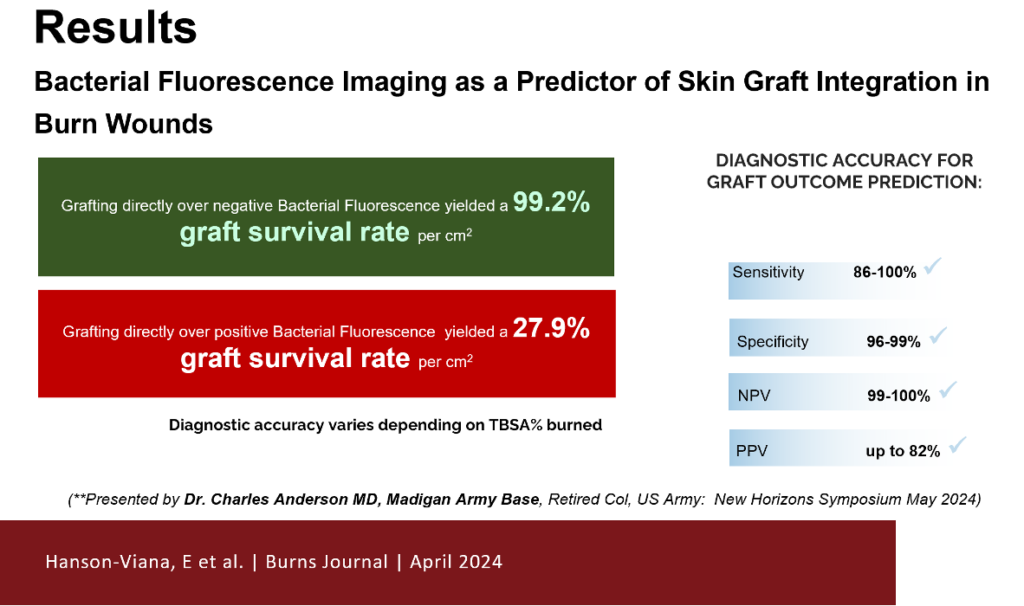Since our last discussion, I have been to Reykjavik, Iceland, for the Global Summit, TexFix here in San Antonio, Texas, SAWC in Orlando, Florida, and WOCNext in Cleveland, Ohio, and very happy to be back in corresponding with you all. As you recall, we left off with sharp debridement and negative pressure. I had the honor and privilege in presenting my abstract at the Mayo Wound Symposium, Rochester, Minnesota, this past March. Since then, a lot has transpired and I can’t wait to share with you, let’s begin!

The following slide was forwarded via Dr. Charles Anderson, a dear friend and colleague, following my trip to WOCNext. Dr. Anderson presented an extremely profound lecture at the New Horizons Symposium last month and I would feel deeply honored in sharing with you since it involves wound bed preparation.
This article recently made its debut April 2024 in the Burns Journal (Hanson-Viana, E et al.) and demonstrates Bacterial Fluorescence Imaging as a predictor of Skin Graft Integration in Burn Wounds.
*Bottom Line Up Front: Wound beds revealing negative Bacterial Fluorescence (eradication of Bioburden, Biofilm, etc) resulted in an outstounding 99.2% graft survival rate. Conversely, Wound beds revealing positive Bacterial Fluorescence (presence of Bioburden, Biofilm, etc) resulted in 27.9% graft survival rate.
In essence, the article delineates a very common denominator in wound care: wound bed preparation and eradication of biofilm for superior results. The last several blogs I have produced resonate this fact that the foundation of wound care begins with the wound bed being addressed. This is further evidence showing the efficacy with measures taken as such. And with the use of the EZDebride Wound Instrument, eradication of bioburden and biofilm has never been easier!
In fact, a brief comparison of the EZDebride Wound Instrument versus a standard curette was conducted utilizing Alcian Blue earlier this year (2024) Again, this was a preliminary comparison reported to the author. The results demonstrated nearly 100% eradication of Biofilm with the EZDebride vs a curette which delineated a poor eradication rate. In the JWC 2021, the EZDebride Wound Instrument revealed a remarkable eradication average of approximately 75% using Moleculite with 100% eradication in 19% of the cases.
Within the next 1-2 years, wound bed informatics will become more feasible, attainable, and affordable especially for the detection of Biofilm. Currently, devices capable of 4 spectrums have been developed for the detection of biofilm. And with the advancements not only in the detection of biofilm, but also in a potential shakeup on rules and regulations governing the use of grafting materials in the wound care space, will visual documentation before and after the wound is debrided be mandatory prior to applying a skin substitute? In other words, will CMS require proof of biofilm eradication before the authorization of expensive advanced wound technologies? In my honest and most humble opinion, I think the writing is on the wall. The question remains: what sharp debridement device is positioned in such a manner as to solve the biofilm dilemma? No need to explain since the answer is right here.
Thank you again for tuning in and looking forward to our next post since we will discuss the outcomes of wound bed preparation for the use of skin substitutes. Please check back often and until next time, fair winds and following seas.
